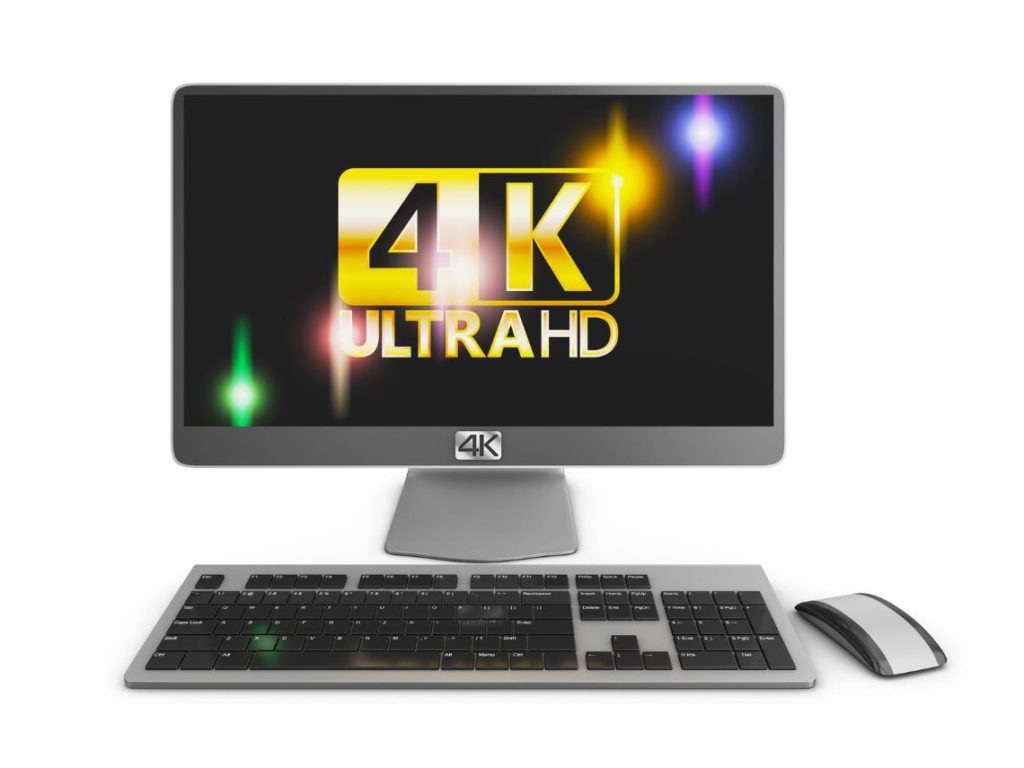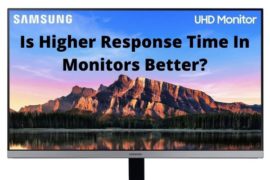When you compare a monitor to a similar-sized TV, you will notice a huge price difference. Naturally, a question will come to your mind; why 4k monitors are so expensive?
The answer lies in quality and performance. Read or watch the review of a monitor, and you would see that it has a better refresh rate, quicker response time, and very accurate color reproduction ability.
I need to do some more explanation so that you can get the proper answer. Read this article, and know the reasons. Don’t believe illogical and mythical facts floating around the web.

How Much Do 4k Monitors Cost?
You can understand that it is not possible to give a one-line answer to the question. But I can give you some ideas.
Here, I am considering only IPS panels because they face better than VA or TN display technology.
According to the current market trend, a good-quality 27” 4k monitor can cost you around 600 bucks.
Under $400, you can also find some decent models. Based on your budget, brand preference, and requirements, choose the right 4k monitor.
But one can get a good-quality 27” UHD TV within 200 dollars. In the next part, I will explain such a huge price difference in TVs and monitors.
Why 4k Monitors Are So Expensive?
You have already got some idea about the 4k monitors being so expensive. Here, I am going to point those out and give a proper explanation.
Pixel Count
As monitors are costlier than other displays, one would assume that they have more pixels per inch than TVs. And, the assumption is correct.
Do Monitors Have More Pixels than TVs?
Yes, monitors have more pixels and are capable of providing vivid and crisp color along with finer detail, and better performance nearby.
You can understand it with your bare eyes. Get very close to a TV display, and you will be able to see pixels separately.
But that won’t be the case for 4k monitors. Such distinct pixel count is intentional because TVs are usually enjoyed across the room.
Input Lag
One big problem for cheap displays is input lag. In extreme cases, you will notice that the audio and video are out of sync.
No matter how costly the device is, it must have a certain amount of input lag. But it is not a problem as long as the delay is tolerable.
For those who don’t know what input lag is, it is the amount of delay that the chip takes to recreate the image from digital signals.
The technology used in monitors is more optimized and equipped with better hardware for the lowest input lag possible.
Hence, the higher price of PC monitors is understandable.
Response Time
There is a difference between input lag and response time. I have already explained the lag.
Now, response time is delayed between your given command and the changed state of the pixels according to it.
For TVs or projectors, users watch videos most of the time. But you use the monitor with your PC giving it commands continuously.
That is why monitors need to have better response times. The slower response rate is very frustrating.
Color Accuracy
For video or photo editing, gaming, and watching high-quality images, the importance of display’s color accuracy is very significant.
No professionals do those tasks on a TV; no matter how expensive they are.
Only 4k monitors have different display technologies to ensure better color reproducing abilities.
With a combination of optimized software and supporting hardware, UHD monitors can provide sharper images.
Better for Eyes
Due to recent advancements in the television manufacturing industry, both TVs and monitors are durable and good for gaming.
The only thing left to mention is their built-in technologies that are friendly to our eyes.
As we use monitors within 3 or 4 feet, reputed brands make their products keeping the health of our eyes in mind.
Low blue light emission, less flicker, and mentioned features above are the reasons we don’t experience eye strain while working on a PC monitor.
Those are all the reasons, manufacturers have to use lots of high-tech solutions to provide a better device. Hence, 4k monitors are more expensive to produce.
Will 4k Monitors Get Cheaper?
Yes, 4k monitors will get cheaper in near future. All major brands have invested heavily to make the tech more available and less expensive to mass-produce.
So, you can hope that gaming in a large 4k monitor will be within your budget limit.
Right now, large 4k monitors with more than 60Hz refresh rates are very expensive.
Are 4k monitors worth the money? The answer will help you invest wisely.
Frequently Asked Questions (FAQs):
Why are 4K monitors cheaper than 1440p?
Because of 4k monitors’ more popularity than 1440p panels, manufacturers focused on it more. Hence, the efficient production process and more availability make 4k monitors cheaper than 1440p or 2k monitors.
Are 4K monitors better for your eyes?
You may be surprised to know that resolution of a display doesn’t make any difference regarding eye strain. Here, other factors like blue light, flickering, brightness, etc. play the role for eye pain or strain.
Why are IPS monitors so expensive?
The raw materials and production process of IPS monitors make them so expensive. Also, they perform better than other types which is why the manufacturers don’t want to sell them at a lower price point.
Why are most 4K monitors only 60Hz?
60Hz refresh rate is the sweet spot for both brands and consumers. Considering 120Hz refresh rate or higher, the price of the monitor gets significantly increased. On the other hand, 30Hz displays are not desirable at all. That is why most of the 2160p monitors come with a 60Hz refresh rate.
Why monitors are expensive than TV?
Due to having quicker response time, increased refresh rate, far better color accuracy, and eye-caring features, monitors are more expensive than TVs. Moreover, monitors last longer than TVs for their better build quality.
Verdict
For TVs and projectors, manufacturers get the advantage of showing high-quality images without using high-end pixels.
It is because the audience views the contents from a long distance. On the other hand, users work on monitors from a very close distance.
Also, people do lots of different tasks on monitors every day.
That is why manufacturers have to use premium components and avail lots of features to support the demand.
I hope that you have got your answer to the question, why 4k monitors are so expensive?





